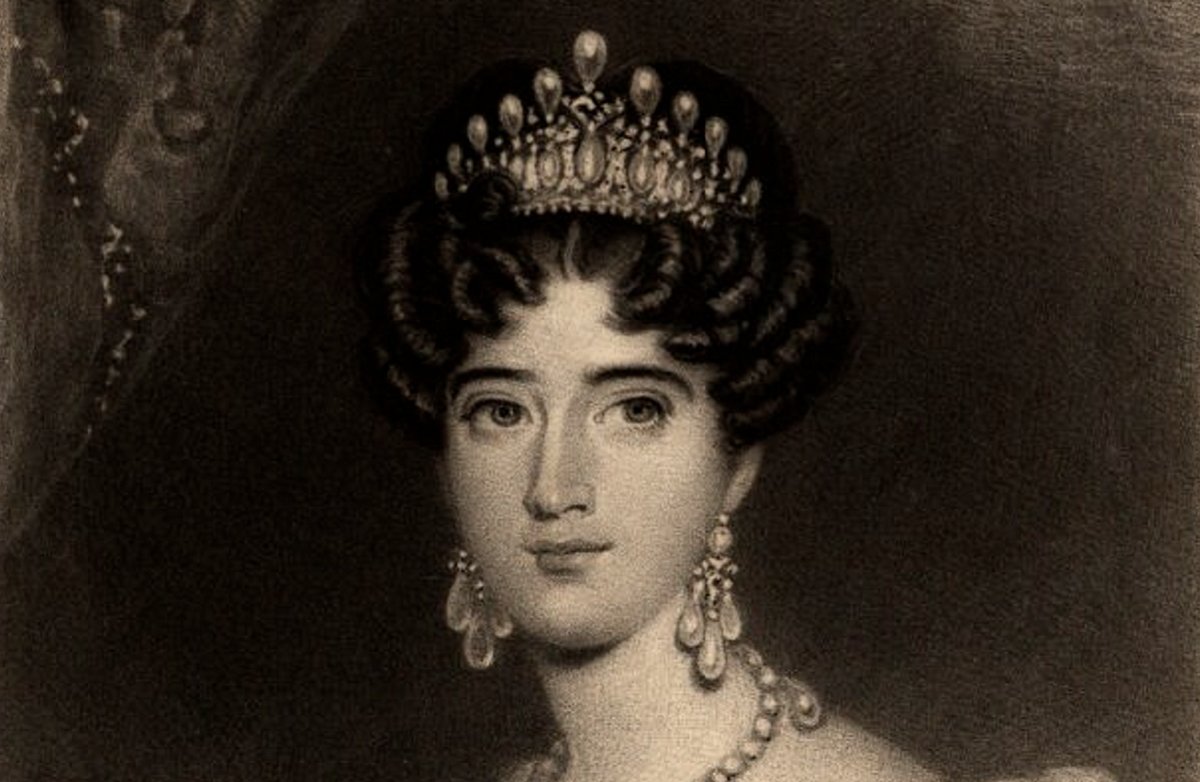
This week, I’m bringing you the stories of several tiaras worn by women who celebrated birthdays and anniversaries at the end of July. First up is an iconic tiara that belonged to a Duchess of Cambridge two centuries ago.
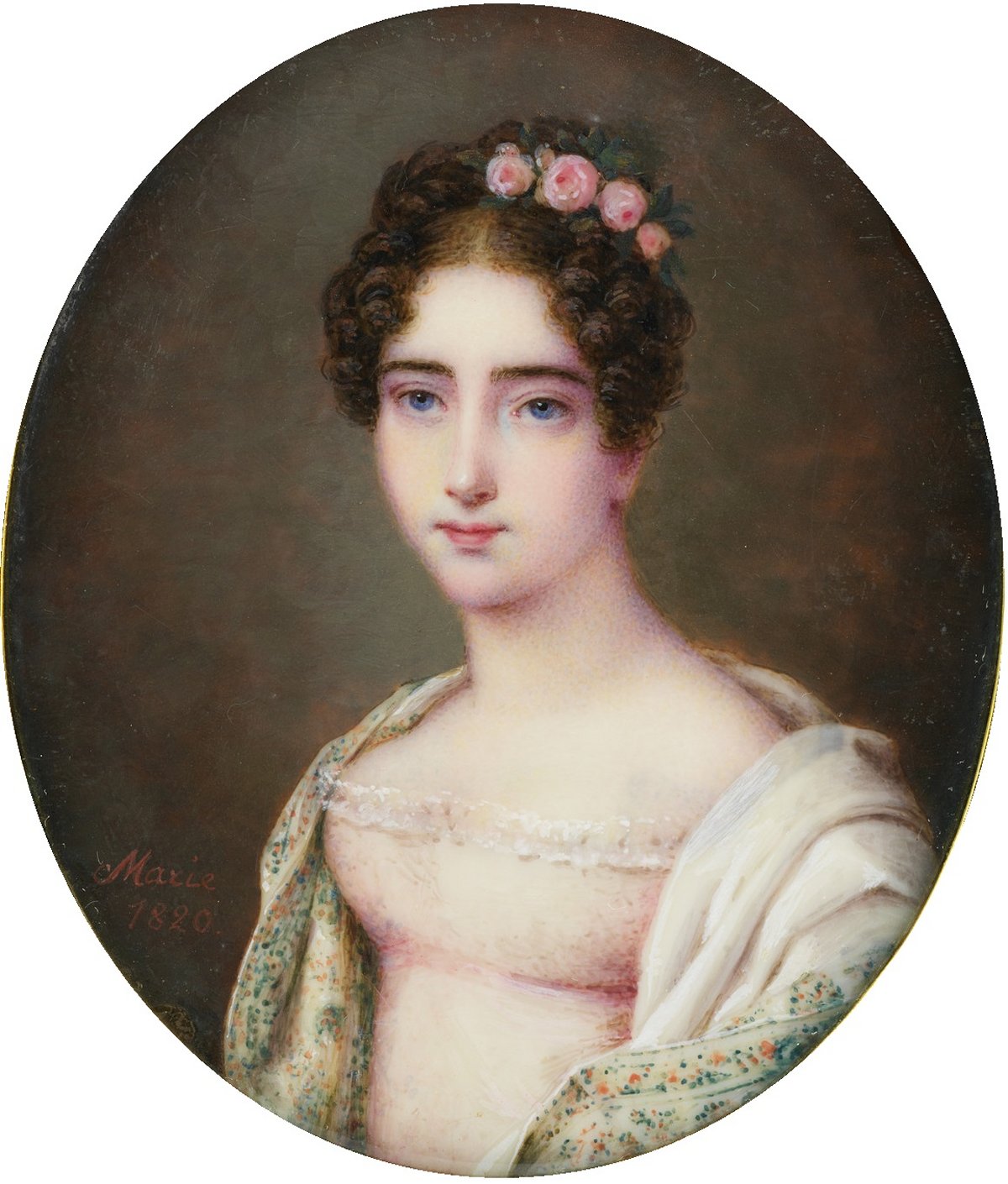
The story of this special royal tiara begins with a tragedy. In November 1817, King George III’s only legitimate grandchild, Princess Charlotte of Wales, died after giving birth to a stillborn son. Though King George and Queen Charlotte’s marriage had produced a remarkable 15 children, only a handful of them had married, and by the end of 1817, none of them had living, legitimate children.
Princess Charlotte’s death triggered a race to produce an heir to the throne. Three of her uncles—the Dukes of Clarence, Kent, and Cambridge—traveled to Germany to find wives among the numerous kingdoms, principalities, and duchies that dotted the landscape. Clarence married the daughter of the Duke of Saxe-Meiningen, while Kent wed the widow of the Prince of Leiningen. The third brother, Prince Adolphus, Duke of Cambridge, found his bride in Kassel: Princess Augusta, niece of the Elector of Hesse.
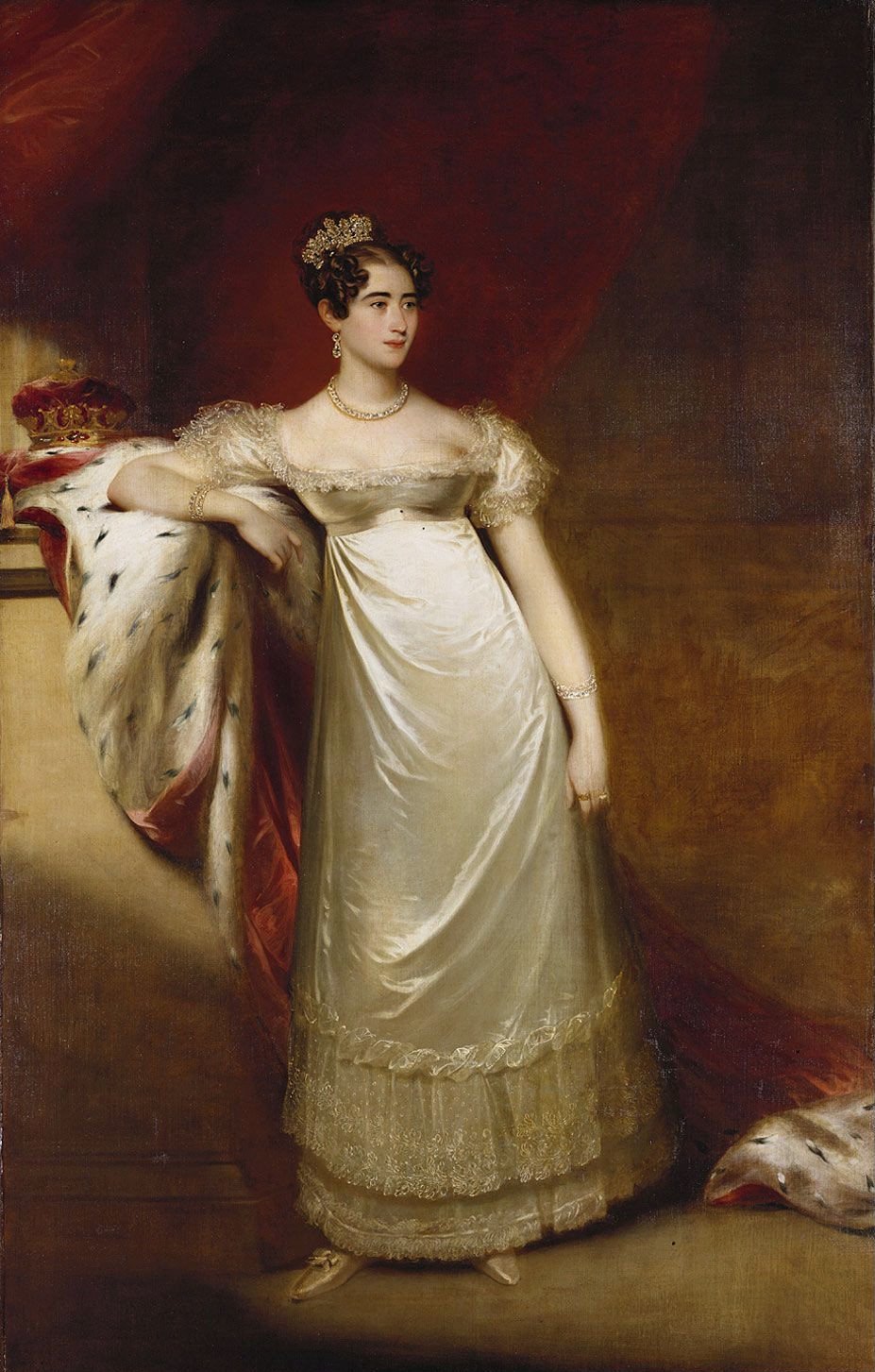
Born on July 25, 1797, Princess Augusta of Hesse-Kassel was 20 years old when she married 44-year-old Prince Adolphus in a pair of ceremonies in Kassel and London in 1818. The two were second cousins, both great-grandchildren of King George II. Augusta became Duchess of Cambridge on her wedding day, but the early years of her marriage were spent in Germany, not in Britain. Prince Adolphus was a military officer, and at the 1813, following the collapse of Napoleonic rule, he was appointed governor of Hanover. He was later upgraded to Governor-General, and then Viceroy, serving in the role for more then 20 years.
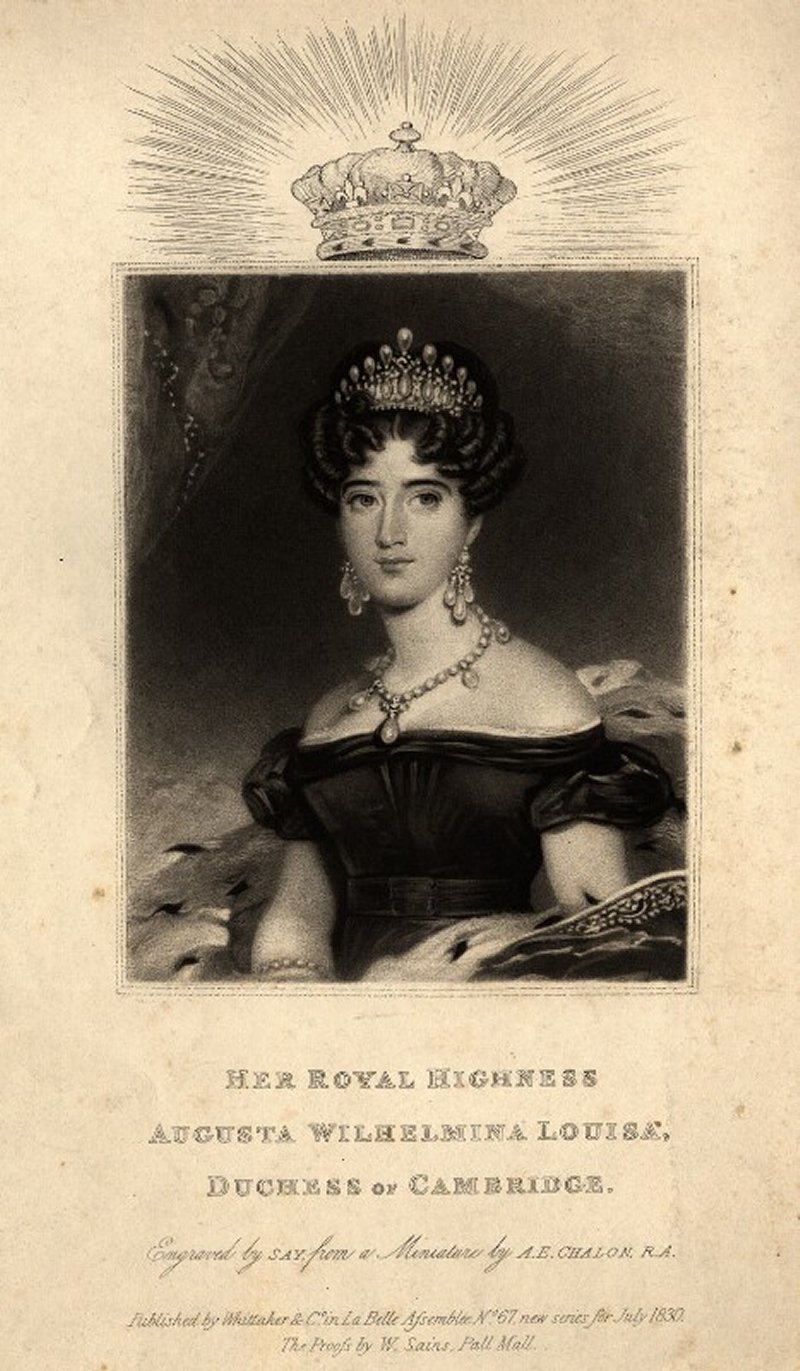
During the Georgian era, the kingdoms of Britain and Hanover were ruled as part of a personal union. As governor and then viceroy, Prince Adolphus was officially serving as the monarch’s representative in Hanover. A British princess already needed glittering jewelry for appearances at court, but a vicereine needed sparkling jewels equivalent to those worn by a queen. It comes as no surprise, then, that Augusta’s jewelry box was full to overflowing with gems, including a spectacular suite of diamond and emerald jewelry, a glittering parure of diamonds and sapphires, and a sparkling diamond and pearl tiara, shown above in an engraving that dates to 1830.
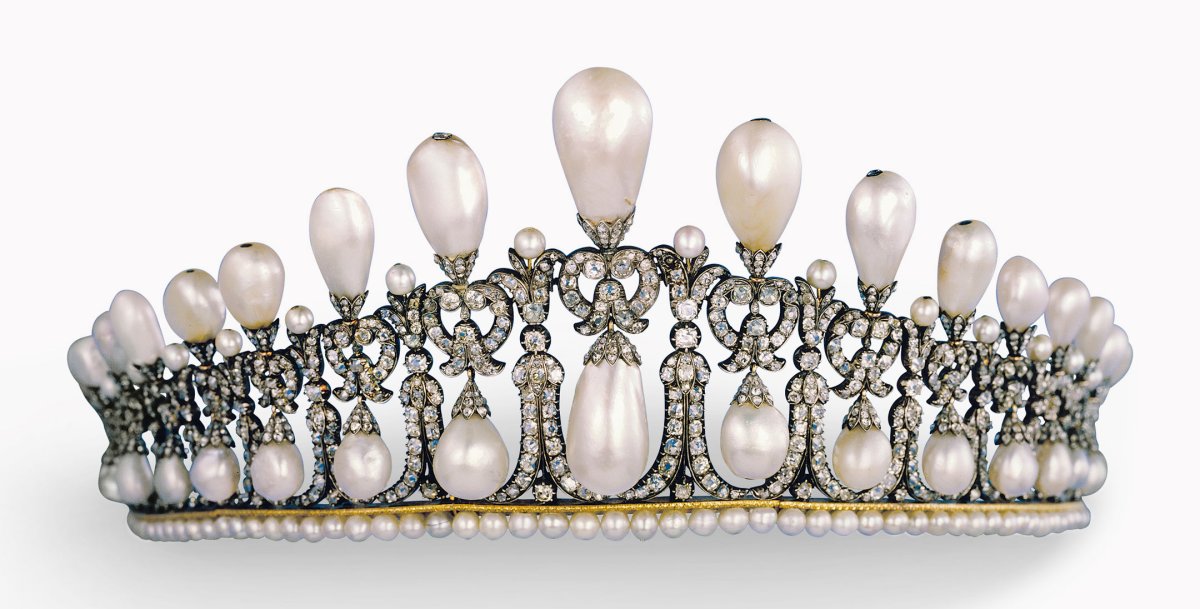
The tiara, with its distinctive, diamond-set lover’s knot design, features pear-shaped pearl toppers and pear-shaped pearl drops. Lover’s knot tiaras were popular during the first half of the nineteenth century. (The Queen of Bavaria, who was one of Augusta’s cousins, had one, too.) Augusta’s tiara is said to have been a wedding gift from members of her family.
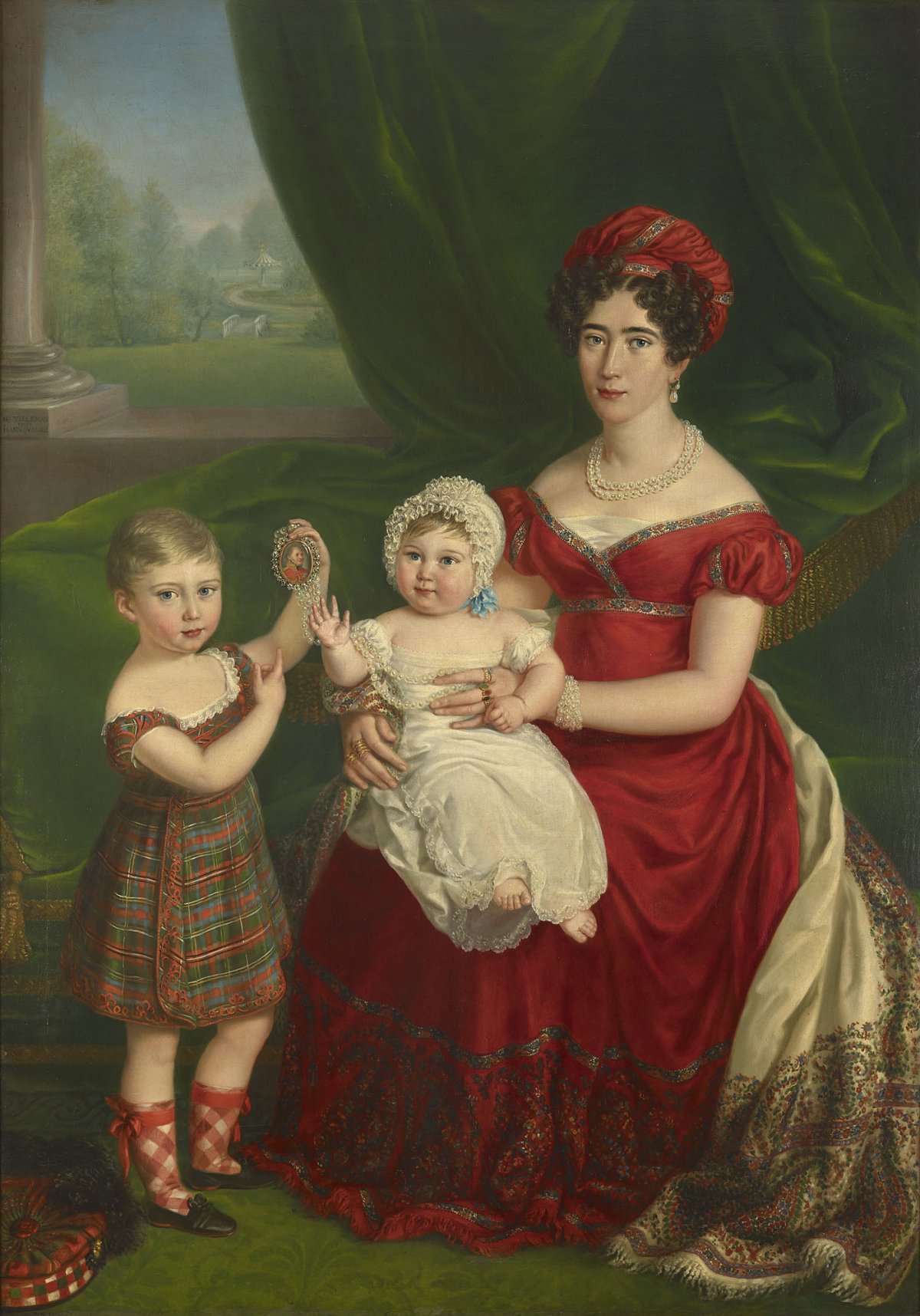
The Cambridges added three children to their family while living in Hanover: Prince George, Princess Augusta, and Princess Mary Adelaide. In 1837, however, they relocated back to London. Adolphus’s niece, Queen Victoria, had inherited the British throne, but women weren’t allowed to reign in Hanover, so that throne passed to Adolphus’s brother, the Duke of Cumberland. With a new king in town, Adolphus’s services were no longer needed, and he and Augusta moved with their children to Kensington Palace.
Now the aunt of the reigning queen, the Duchess of Cambridge became a fixture at court in London. Augusta wore her lover’s knot tiara for Victoria’s coronation in 1838, and she continued to appear in the jewel regularly for several years to come at court functions and family celebrations.
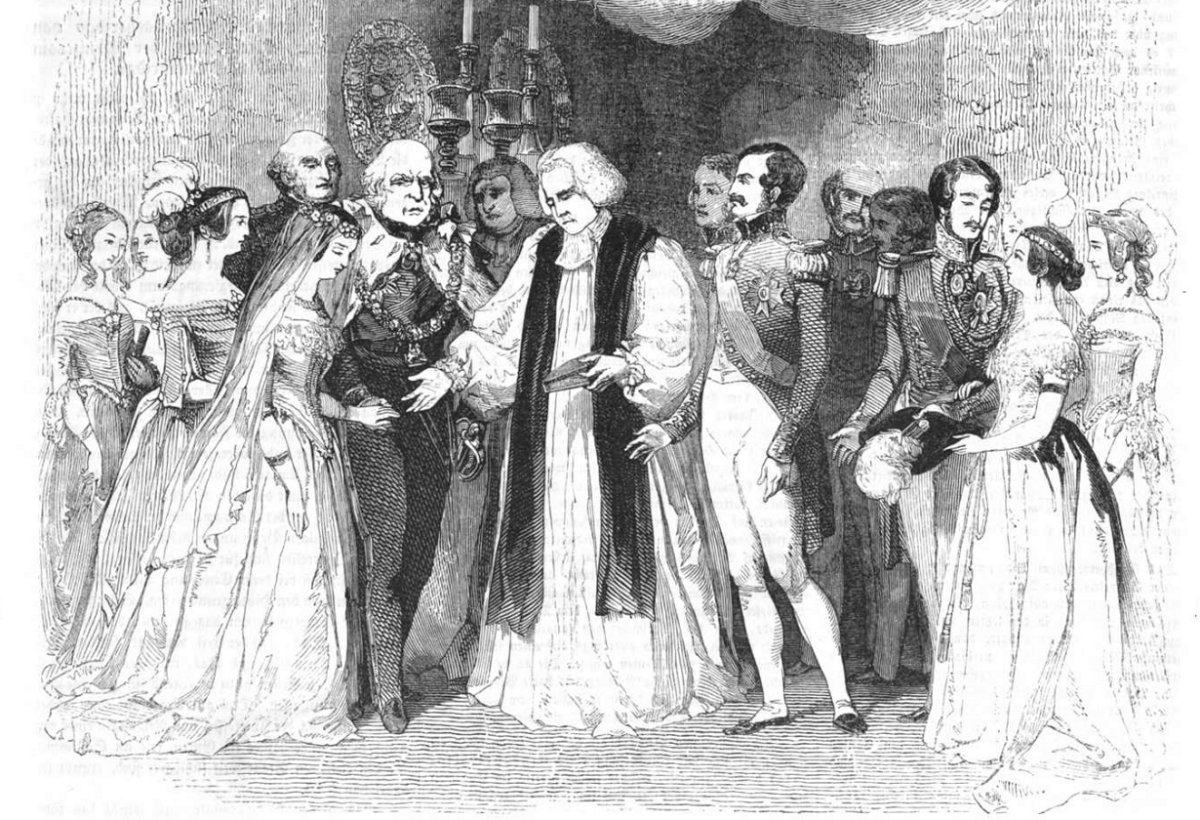
One of the earliest and most important of these family celebrations took place in 1843, when her elder daughter, Princess Augusta of Cambridge, married the Hereditary Grand Duke of Mecklenburg-Strelitz. For the royal wedding, Princess Augusta wore a gown of blue satin and silver tissues with lace, plus her diamond and pearl lover’s knot tiara. (The younger Augusta wore a silver and white wedding gown, with a wreath of orange blossoms and myrtle nestled around a diamond and sapphire tiara, which was a wedding gift from her mother.)
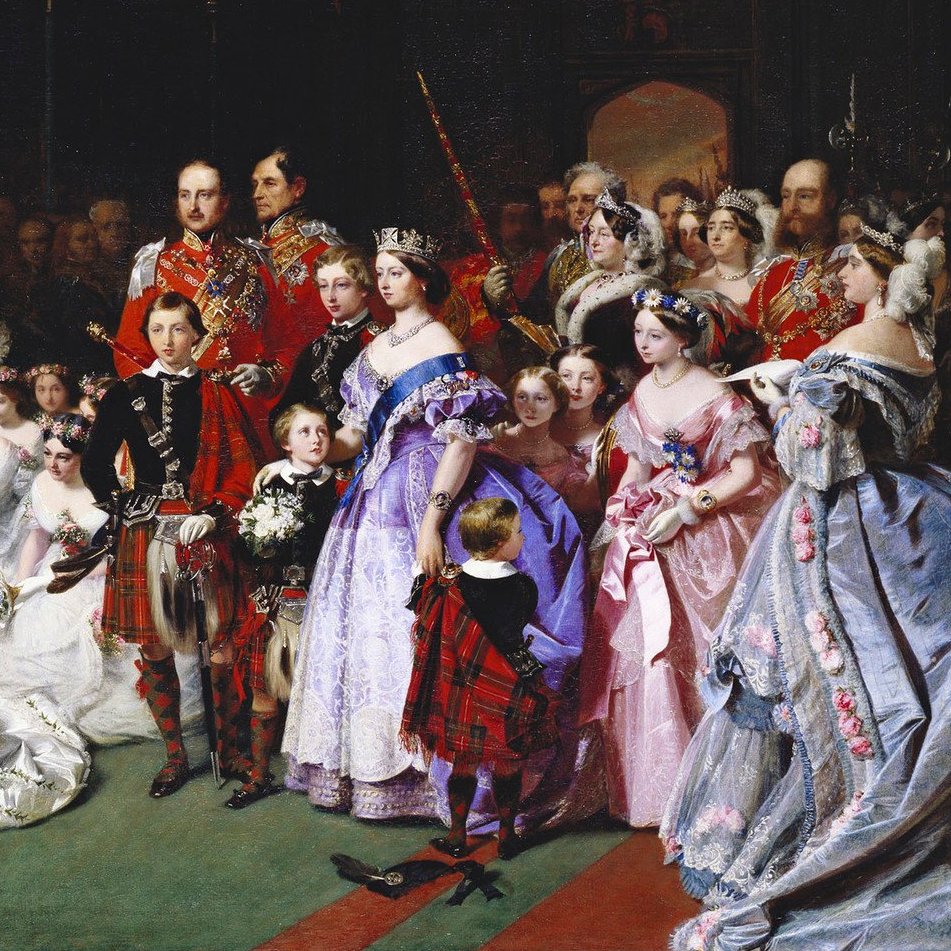
The elder Augusta also wore the lover’s knot tiara in January 1858 for the wedding of the Princess Royal and Prince Friedrich Wilhelm of Prussia. You can spot her wearing the tiara in the family grouping depicted in John Phillip’s painting of the wedding. The Morning Post also mentioned the tiara in their description of her attire for the ceremony: “The Duchess of Cambridge wore a lilac silk dress, with double skirt, both skirts trimmed with bouillonnes of tulle and Honiton lace; the train, lilac moire antique, trimmed with ermine; a stomacher of diamonds and pearls; a necklace of diamonds. Her Royal Highness’s headdress was composed of a tiara of large pearls and white feathers, with a veil of Honiton lace pendant from the back of the head.”
Five years later, in March 1863, Augusta also wore the lover’s knot tiara for the wedding of the Prince of Wales and Princess Alexandra of Denmark. Her ensemble was described as follows in the Belfast News-Letter: “The Duchess of Cambridge wore a violet velvet train, trimmed with ermine. Petticoat of violet satin, trimmed with black lace, covered wtih a tunic of Honiton lace. A tiara of pearls and diamonds. Necklace and stomacher to match.”

The Duke of Cambridge passed away in 1850, but his Duchess lived on for another 39 years. She passed away in 1889 at the age of 91. Her lover’s knot tiara was passed along to her elder daughter, now Grand Duchess Augusta of Mecklenburg-Strelitz. She wears the tiara above in a portrait taken during the coronation celebrations for her cousin, King Edward VII, in the summer of 1902.
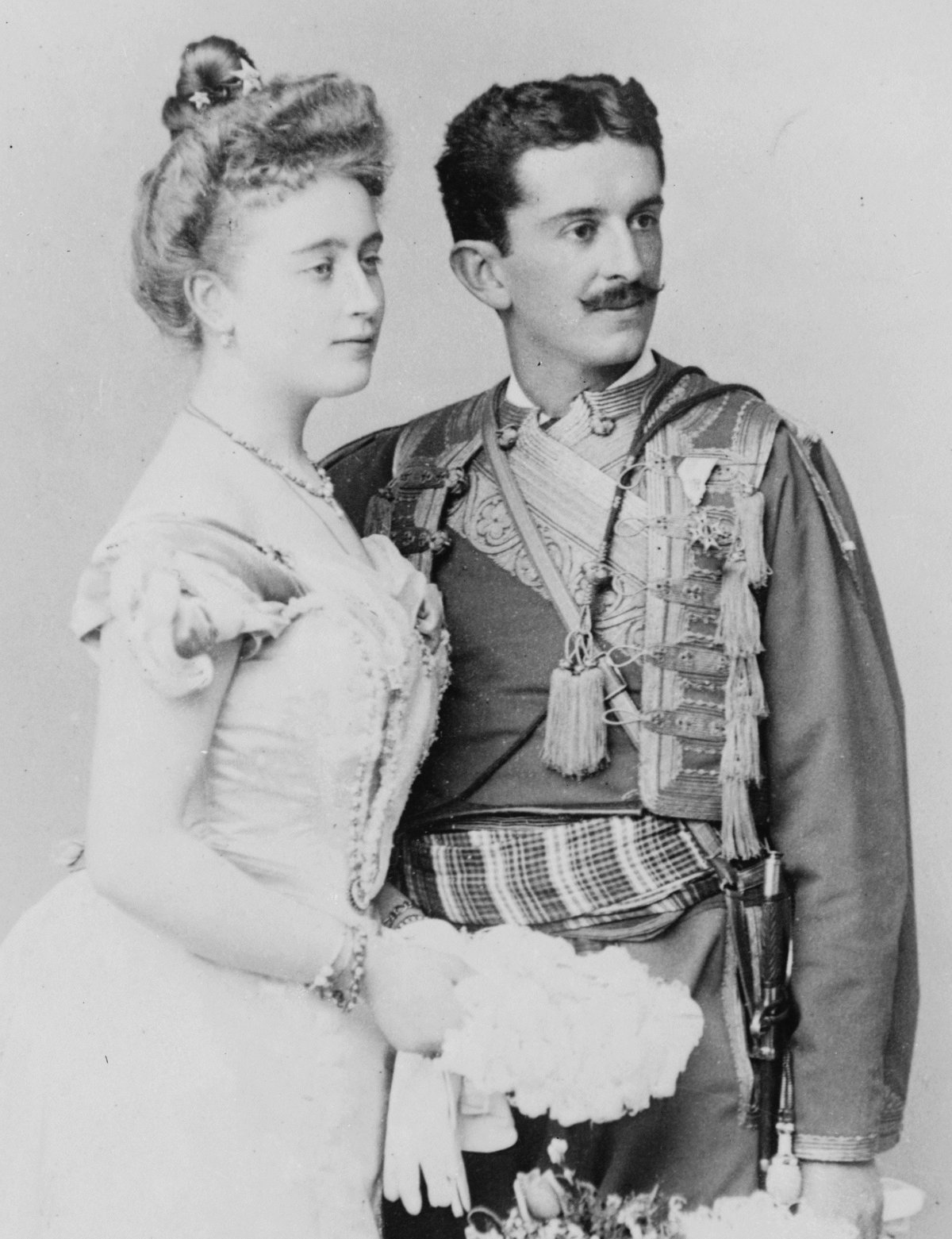
Grand Duchess Augusta had two sons, one of whom survived and became Grand Duke Adolphus Frederick V of Mecklenburg-Strelitz in 1904. (His children’s lives were sadly the stuff of scandal sheets: a child out of wedlock, a duel, affairs, a divorce, etc.) Eventually his second daughter, Duchess Jutta, inherited the lover’s knot tiara from her grandmother. (She was a fascinating character, who reportedly loved drawing caricatures of her friends and practicing jiu-jitsu.) To my knowledge, Jutta, who married the last King of Montenegro, was never photographed in the tiara. She had no children, and eventually the jewel was sold.
View this post on Instagram
The timeline surrounding the sale (or sales) of the tiara is a little murky, but we know that it was eventually purchased by another German family with royal roots. Christie’s sold the tiara at auction in Geneva in May 1981, and it was acquired by Prince Georg von Waldburg zu Zeil (a descendant of several princely families, including the Kinskys and the Princes of Liechtenstein) and his wife, Princess Marie Gabrielle of Bavaria (a granddaughter of the last Crown Prince of Bavaria).
The Cambridge Lover’s Knot Tiara still pops up occasionally, now worn by their daughter-in-law, Mathilde, who is the daughter of the late Duke of Württemberg and Princess Diane of Orléans. Above, Duchess Mathilde wears the tiara in October 2018 at the wedding of her niece, Duchess Sophie of Württemberg.
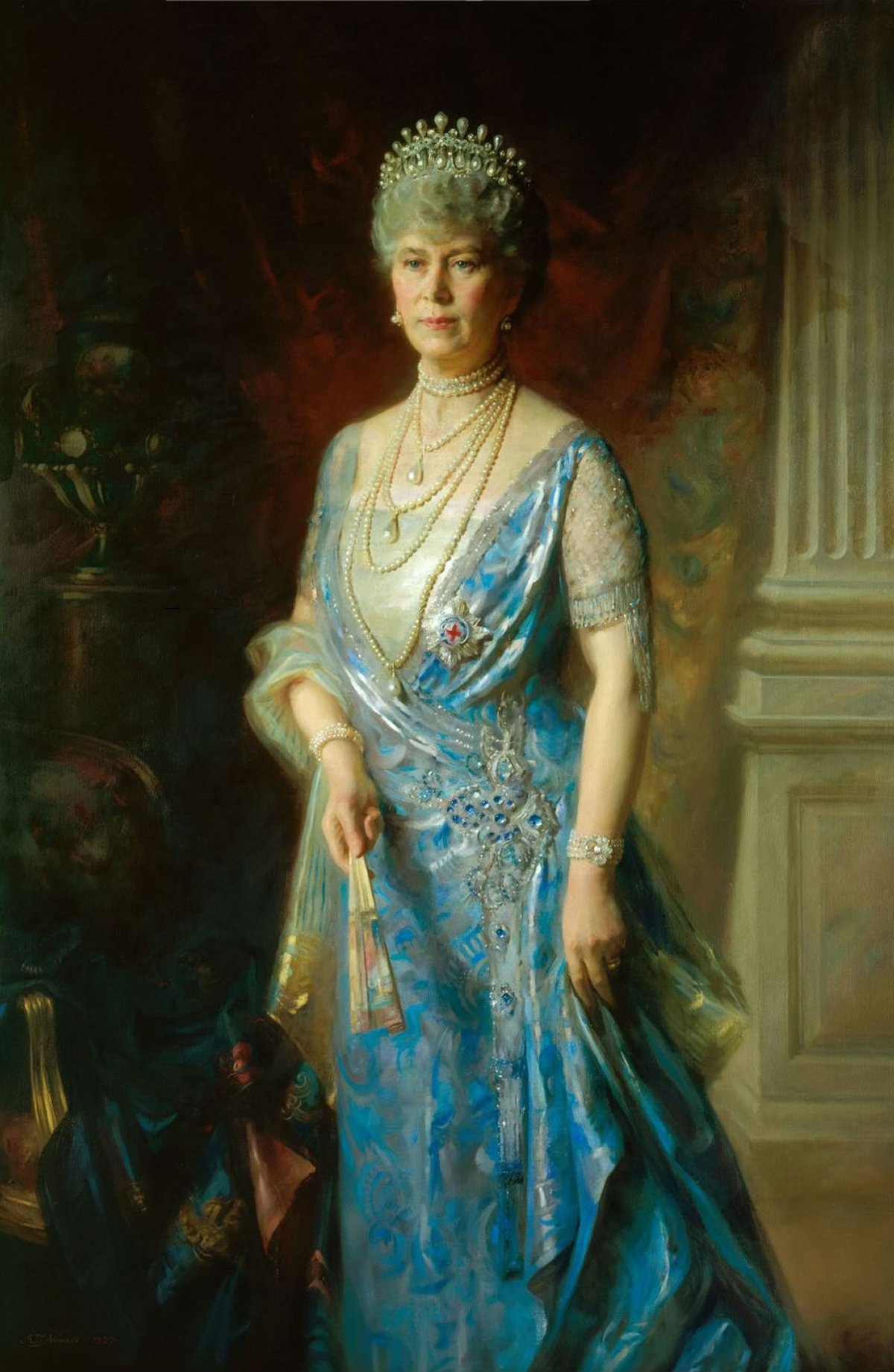
There is, of course, a post-script to this story. Princess Mary Adelaide, the younger daughter of the Duke and Duchess of Cambridge, had a daughter of her own: Princess May of Teck, who became Queen Mary. She particularly loved the lover’s knot tiara worn by her aunt, Grand Duchess Augusta, but she wasn’t in line to inherit the jewel.
A few years before Augusta’s death, Mary took matters into her own hands, ordering her own copy of the lover’s knot tiara. She’s depicted above wearing her lover’s knot tiara, which was originally set with pearl toppers just like the original, in a 1927 portrait.
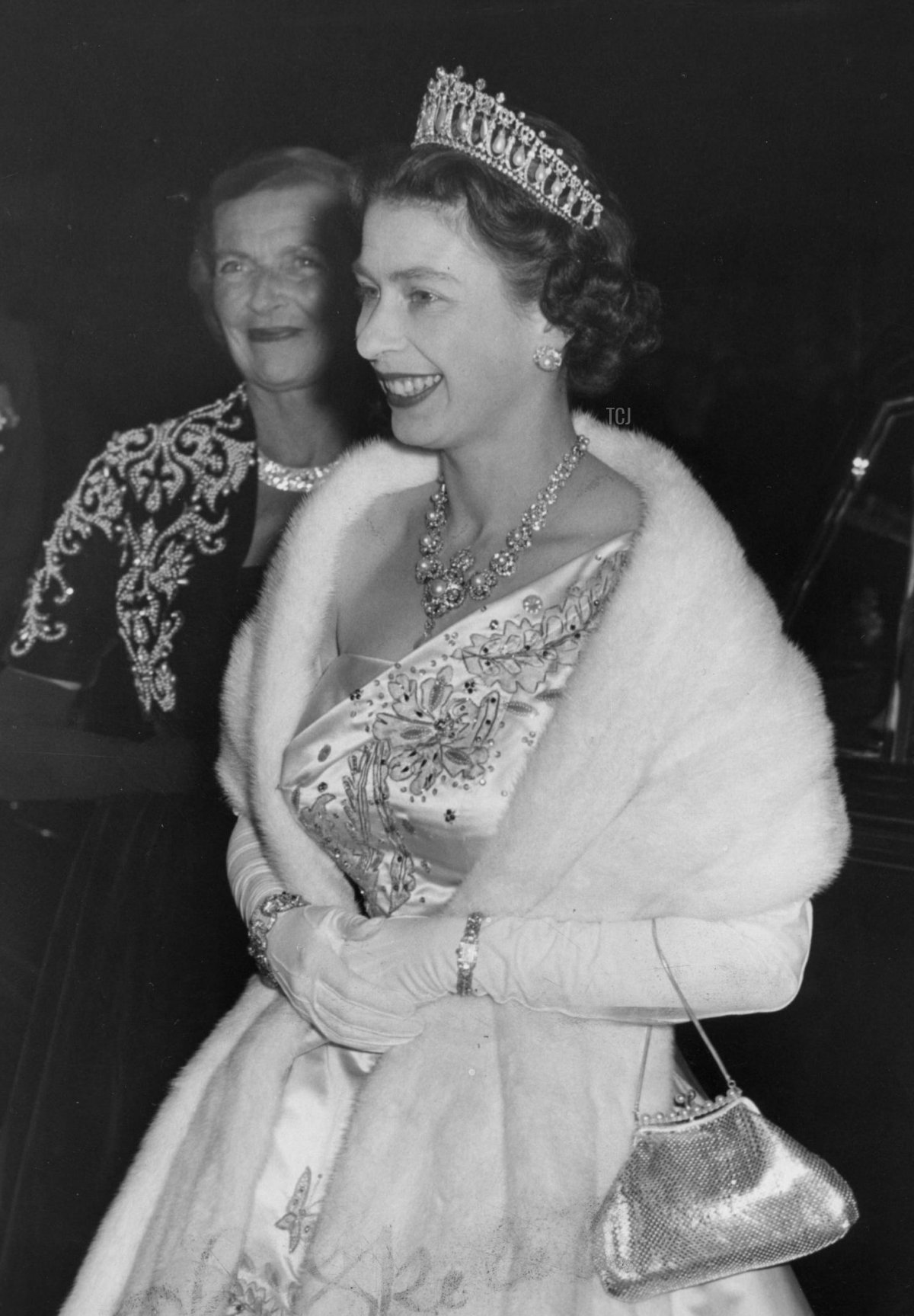
Eventually, Mary removed the pearls from the top of her lover’s knot tiara. (The lack of the top row of pearls is one of the easiest ways to tell the two tiaras apart. Queen Mary’s Lover’s Knot Tiara also has a row of diamonds at the base, while the Cambridge Lover’s Knot Tiara has a row of pearls.) The smaller version of Mary’s lover’s knot tiara was inherited in 1953 by Mary’s granddaughter, Queen Elizabeth II, who wore it occasionally in the early years of her reign.
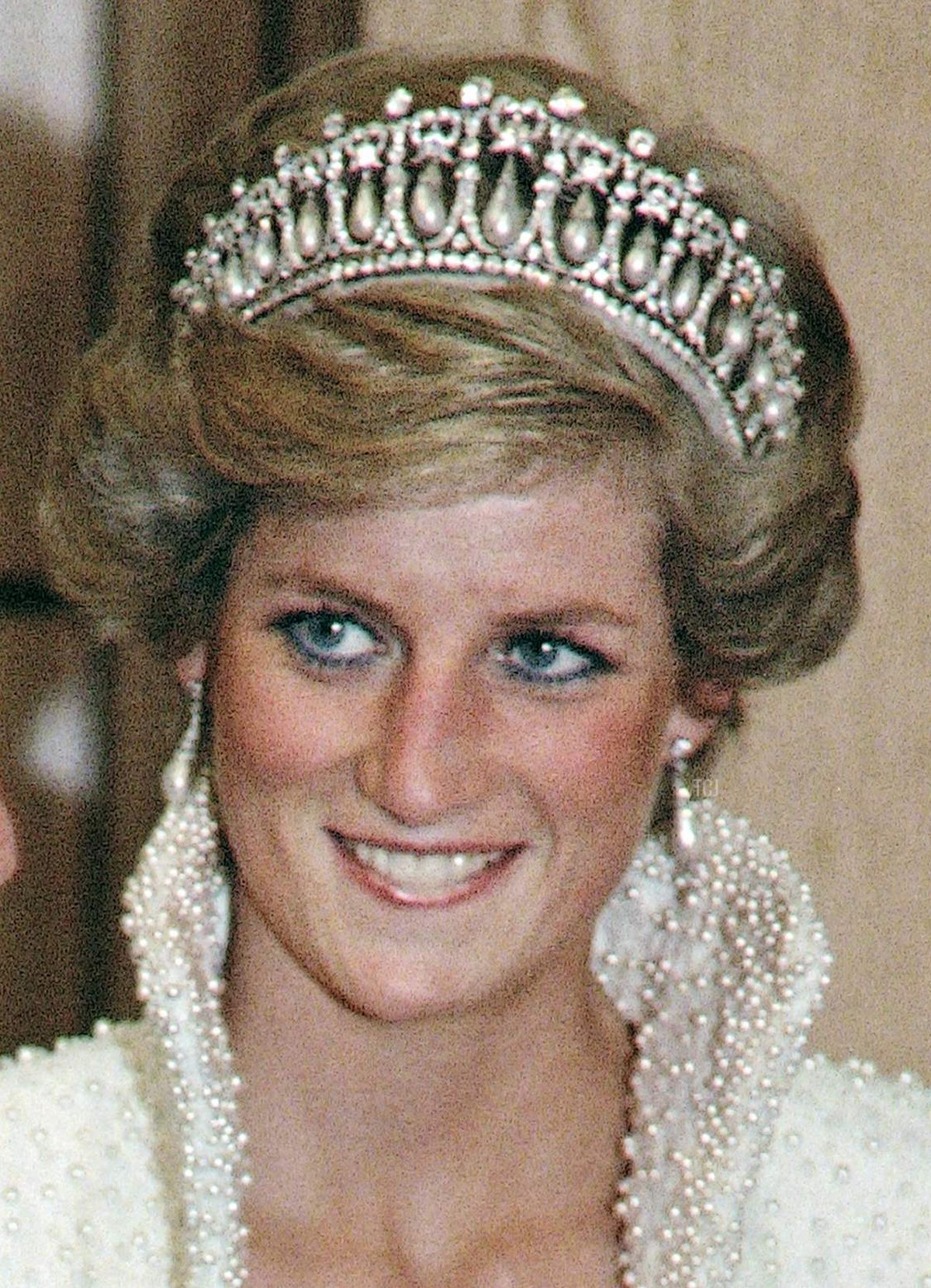
In 1981—the same year that the original Cambridge Lover’s Knot Tiara was sold at Christie’s in Switzerland—Queen Elizabeth II passed Queen Mary’s Lover’s Knot Tiara along to her new daughter-in-law, Lady Diana Spencer. She wore the tiara throughout her tenure as Princess of Wales. After her death, the tiara was returned to the Buckingham Palace vaults.
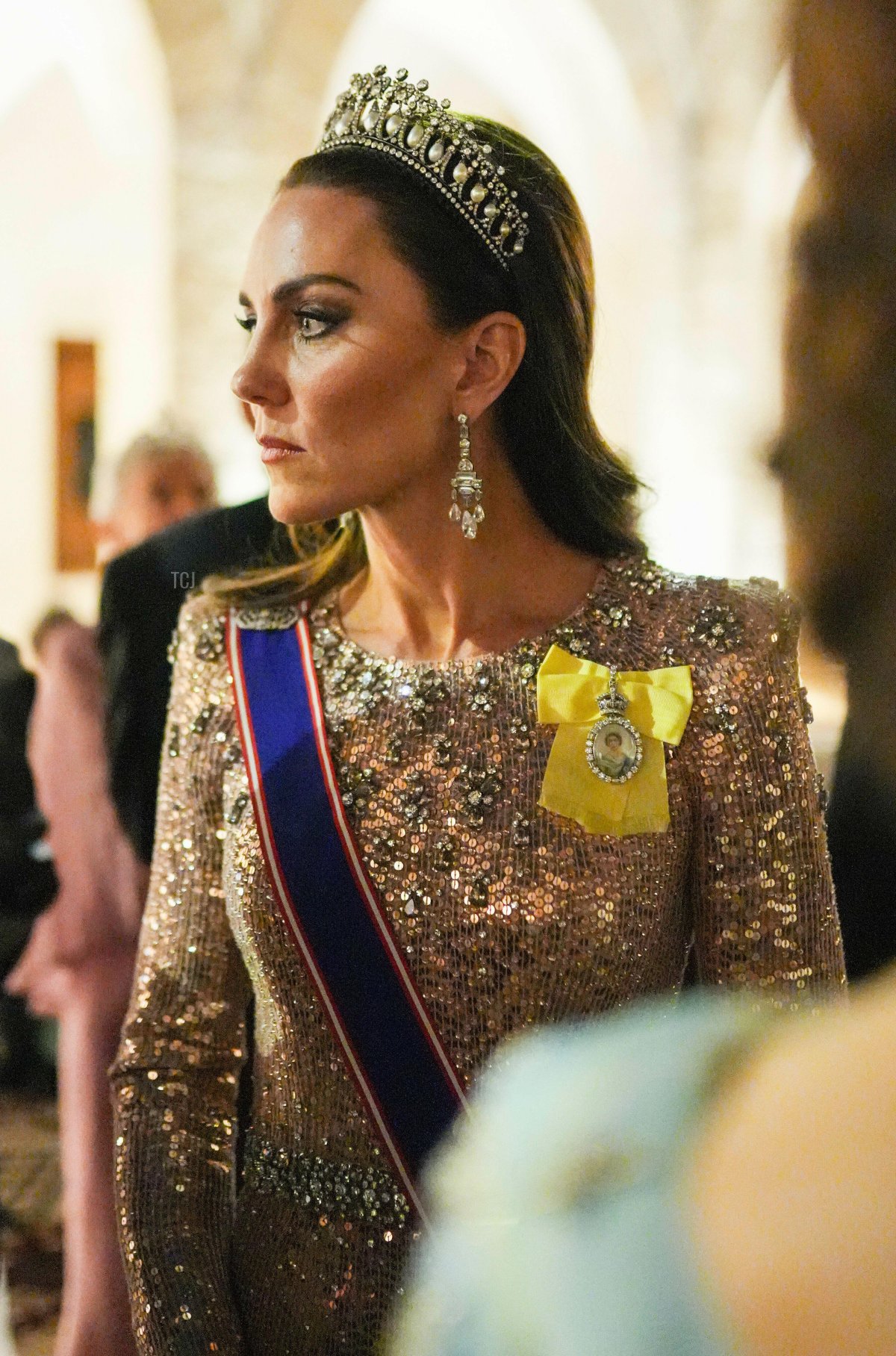
Now, Queen Mary’s Lover’s Knot Tiara is worn by the present Princess of Wales—who was, of course the second Duchess of Cambridge until 2022.
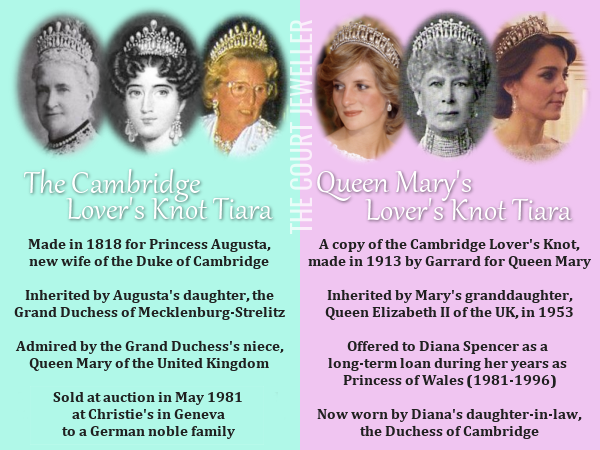
I made this handy chart a few years ago to help you remember the difference between the two tiaras: the first one owned and worn by Princess Augusta, Duchess of Cambridge, and the second one commissioned by her granddaughter, Queen Mary.
Leave a Reply
You must be logged in to post a comment.